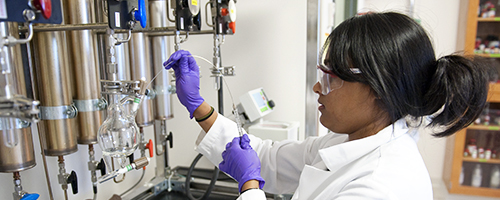Document Type
Article
Publication Date
1-13-2006
Publication Title
Journal of Biological Chemistry
Abstract
Native disulfide bond formation in eukaryotes is dependent on protein-disulfide isomerase (PDI) and its homologs, which contain varying combinations of catalytically active and inactive thioredoxin domains. However, the specific contribution of PDI to the formation of new disulfides versus reduction/rearrangement of non-native disulfides is poorly understood. We analyzed the role of individual PDI domains in disulfide bond formation in a reaction driven by their natural oxidant, Ero1p. We found that Ero1p oxidizes the isolated PDI catalytic thioredoxin domains, A and A′ at the same rate. In contrast, we found that in the context of full-length PDI, there is an asymmetry in the rate of oxidation of the two active sites. This asymmetry is the result of a dual effect: an enhanced rate of oxidation of the second catalytic (A′) domain and the substrate-mediated inhibition of oxidation of the first catalytic (A) domain. The specific order of thioredoxin domains in PDI is important in establishing the asymmetry in the rate of oxidation of the two active sites thus allowing A and A′, two thioredoxin domains that are similar in sequence and structure, to serve opposing functional roles as a disulfide isomerase and disulfide oxidase, respectively. These findings reveal how native disulfide folding is accomplished in the endoplasmic reticulum and provide a context for understanding the proliferation of PDI homologs with combinatorial arrangements of thioredoxin domains.
Volume
281
Issue
2
First Page
876
Last Page
884
DOI
10.1074/jbc.M511764200
ISSN
00219258
Creative Commons License

This work is licensed under a Creative Commons Attribution 4.0 International License.
Rights
© 2006 by The American Society for Biochemistry and Molecular Biology, Inc.
Version
Version of Record
Recommended Citation
Kulp, Mohini; Frickel, Eva Maria; Ellgaard, Lars; and Weissman, Jonathan S., "Domain Architecture of Protein-disulfide Isomerase Facilitates Its Dual Role as an Oxidase and an Isomerase in Ero1p-Mediated Disulfide Formation" (2006). Chemistry: Faculty Publications, Smith College, Northampton, MA.
https://scholarworks.smith.edu/chm_facpubs/70


